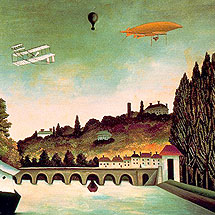| 6. Flying |
 |

The air is an important medium of transport
for many living organisms. For humans it has meant exploring a new
means of transport and communication with aeroplanes and man-made
satellites, thanks to which we have entered the “digital age”.
However, flying is one of the human activities that most contributes
to the emission of greenhouse gases, responsible for the climatic
change of human origin. Kerosene is the fuel used by commercial aircraft,
and as it burns it produces of greenhouse gases such as carbon dioxide
and water vapour, as well as other pollutants.
|


[ enlarge image ] |
 |
| Identifying criteria. Criteria are valuable
tools for a thinker. Whenever we make value judgments, compare
or classify we use criteria. If we want students to be responsible
thinkers they should be aware of the criteria that they use when
making judgments. |
| What criterion belongs in the blanks? |
| 1. |
If we use ........... of an eagle as a criterion,
a seagull is small.
|
| |
If we use ........... of a sparrow as a criterion,
a seagull is big. |
| |
If we use ........... of a supersonic aircraft
as a criterion, a small plane is slow. |
| |
If we use ........... of a pigeon as a criterion,
a small plane is fast. |
| |
If we use ........... of a ship as a criterion,
a kite is light. |
| |
If we use ........... of a feather
as a criterion, a kite is heavy. |
| |
(speed)
(weight) (size) |
| 2. |
If we use ........... as a criterion, travelling
by plane is safer than travelling by car. |
| |
If we use ........... as a criterion,
a supersonic aircraft pollutes more than a
train. |
| |
If we use ........... as a criterion, glass
is better than plastic. |
| |
(greenhouse
gas emission) (the number of accidents per year)
(ease of recycling) |
|
|
 |
 |
|
Music. Listen to: Butterflies by
Robert Schumann, from the work Carnival. |
 |
| Reading. Story: Pula
the Canary. |
 |
| Make and decorate a kite.
You can collaborate with the area of plastic arts and technology. |

 |
| © Grup IREF 2003, with the support of the European Commission, DG XXII (Socrates/Comenius 3.2) |
[ print ] |
|
|
|
|